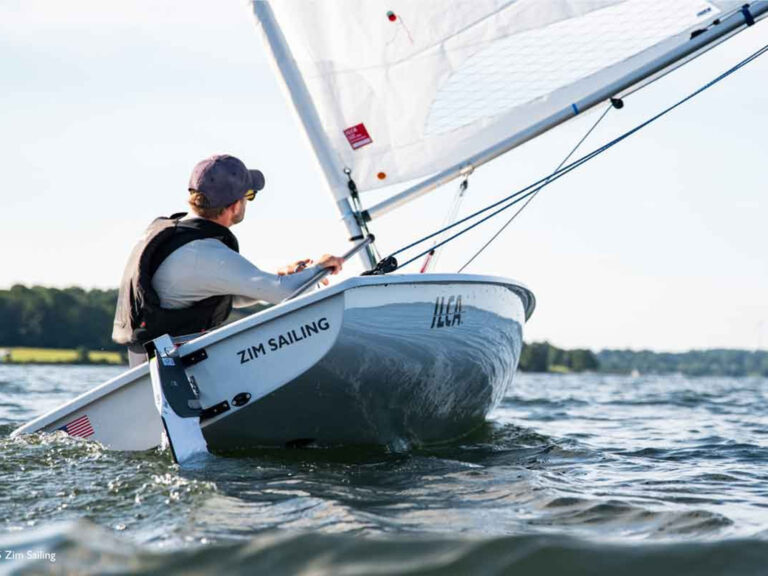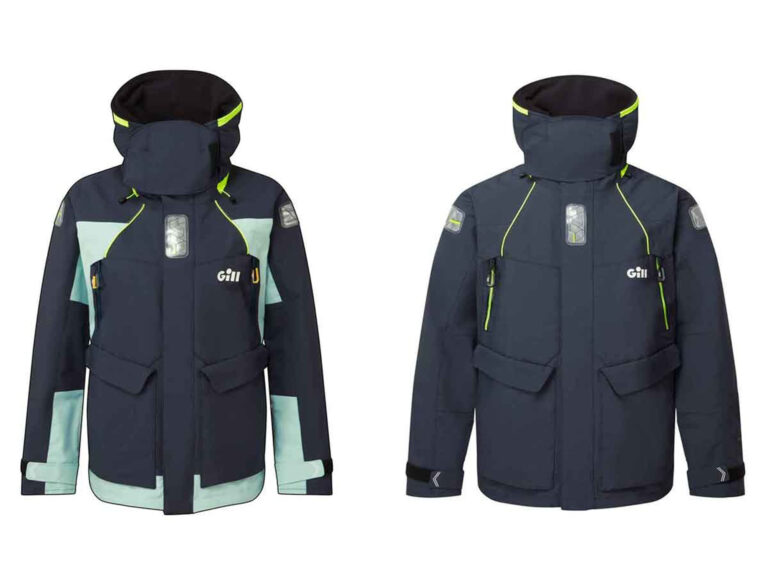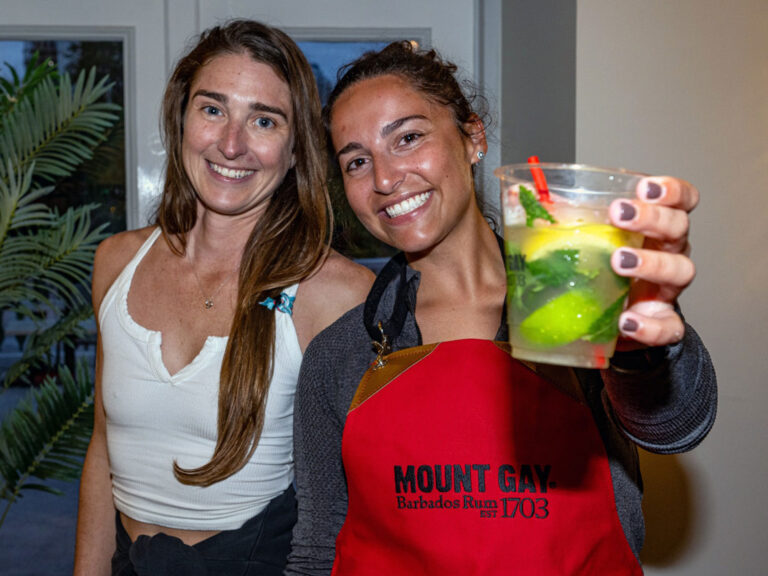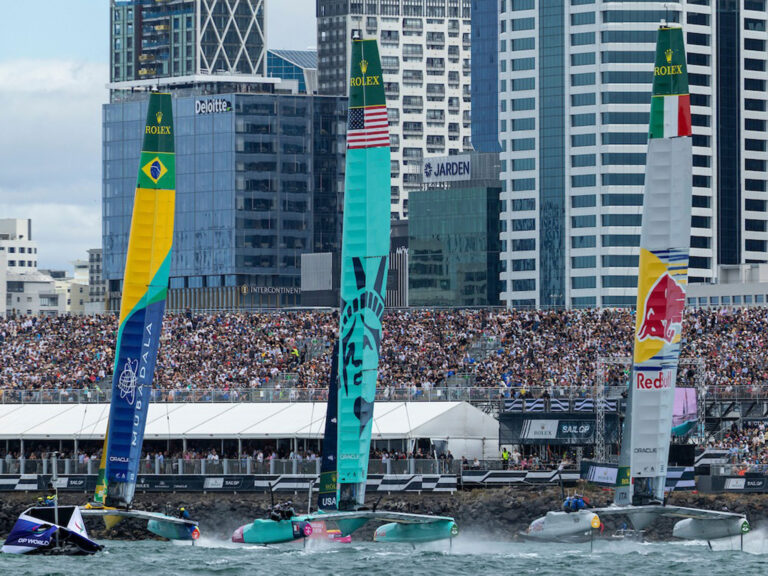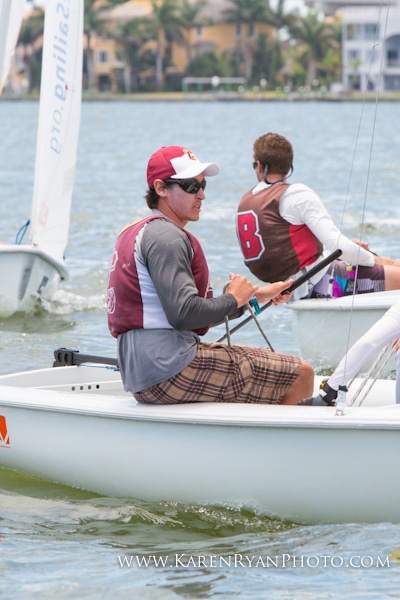
Juan Maegli
College of Charleston senior Juan Maegli wrapped up his second Olympic campaign last August, placing ninth among the world’s top Laser sailors—before heading back to campus to launch a college sailing season that would culminate in the highest accolades. Even though he took many weekends off to unwind and pursue his Olympic program, he was named College Sailor of the Year for his dominant performance at the events he did attend—much to his surprise.
What was it like for you to be named College Sailor of the Year?
JM: When I came back after the Olympics, I didn’t know if I wanted to do another year of college sailing. I wanted to take a year off, and in the end I ended up sailing a little bit … I asked for a lighter fall semester, just because I’ve been sailing nonstop for the last two years. So, my biggest goal when I decided to come back for college sailing was to try to win College Sailor the Year—well, to just try to have a good season, where I would be in the running for it. Just to be able to achieve that was pretty cool, and it being my last college regatta and everything, it was just awesome to finish it that way.
Did you expect to be named College Sailor of the Year, after your crushing performance in A Division, where you won by 41 points? Not to mention the fact that you won the Singlehanded Championship in the fall.
JM: No, I wish I was expecting it a little bit! I had no idea, because that semester I didn’t even do any other fleet races, so I just wasn’t expecting it. I mean, I did well at Nationals and everything, but I just didn’t do many other things. My teammates kept saying I was going to win, but it just never crossed my mind I was going to. I wish I would have listened to them and I could have prepared something to say, because I’m so bad at talking in public. I was like oh, shoot, what do I say!
Do you think that all of your Olympic training over the two years you took off helped you this last year of college sailing?
JM: I think so. One of the things I got pretty good at is peaking at the right time. Even though I would have a bad result, I would try not to think too much about it because there are other details you’re trying to get better at. So, I would go into an event saying, ‘Okay, I’m going to practice my pin starts,’ and then try to win the pin. So, I would evaluate an event depending on how I did in that aspect, not in the result, and that would let me peak at the right moment, so to speak. So, that’s one of the things that definitely helped a lot. And then the other thing is that we, for once, had a windy regatta at a College Nationals, so I guess that sailing Lasers helped a lot.
What one specific thing were you consistently doing around the course better than everyone else? You had only two finishes out of the top 10.
JM: We knew that we had good speed upwind, so that would give me the opportunity not to risk much at the start. I could risk less, and then once I found myself in a good position, I would just have to do whatever other boats were doing, because if I could stay with them, I knew that I was going equally as fast upwind with the heavier teams. I was sailing very light with my crew, so we could cruise on the reaches and on the downwinds. Instead of making decisions because I wanted to get first to the top mark, if I got to the top mark in the top seven, I would have a very good race.
What would you say you did that made your speed so much better than everyone else’s?
JM: Well, my crew was hiking really hard! I sailed the first day with [Septima McAdams], she’s a freshman at the College of Charleston, and then for the other two days I sailed with [Corinna DeCollibus], and they were both hiking really hard. It made it easier for me to just keep pushing hard, just to see how hard they’re working.
You took a year off after high school to do the Beijing Olympics, then were at Charleston for two years, then took two years off to train for the London Olympics before coming back for this past year. How has the coming and going from college been for you?
****JM: It’s weird, but it’s the only way I can manage to do it. I wouldn’t want to go to the Olympics if I didn’t feel well-prepared for it, and the only way I can prepare for it is by taking some time off—you know, I did two years of full-time training for the Olympics, but people I’m competing against are doing four, six years or whatever. So it’s the best way I felt like I could prepare, but ideally I would like to take more. Hopefully, for the next Olympics I can do that.
You’re only 24, and you’ve already competed in the Olympics twice. How does that feel?
JM: I was the last boat to qualify for Beijing. I was a Hobie 16 sailor before—I sailed catamarans—and I [won gold at the] 2007 Pan Am games in September. After that, I wanted to sail Tornadoes, but they had taken them off for the London Olympics, so I just started sailing Lasers. I said, ‘I’m going to try to sail for three months and go to the Olympic qualifiers; try to do well so I can get a wildcard,’ and I ended up being the last boat to qualify.
You have improved incredibly quickly in different boats and conditions throughout your sailing career. What would you attribute this adaptability to?
JM: I grew up sailing by myself, starting in Optis, and then in Hobie Cats, I was the only boat here in Guatemala, so a lot of the training I do is by myself. I guess I got pretty good at knowing if I was doing something good or bad by feel, not by reference with other boats. So I guess that’s why I can jump into a new boat and get the hang of it pretty quickly, and I can see that now that I’ve begun to sail Moths.
Do you have any advice for college sailors who are also thinking of trying an Olympic campaign?
JM: After Beijing I wasn’t very good at Lasers or anything; I was very weak, my fitness wasn’t very good. I trained really hard when I was at college, and even though I probably sailed only five or six times in the Laser [that year], when I went to Europe for the summer, I had improved so much just because I was fitter. If you know you’re going to be doing an Olympic campaign, try to get very fit. Being in college helps with that, because a lot of the sailing teams work out, and then you’ll be sailing every day, pretty much. That gives you the opportunity to work on technical stuff, like starting and mark rounding—it doesn’t really matter what boat it is, it’s still that repetition.
Do you have any specific fitness tips for college sailors trying to get in top shape?
JM: One thing I do a lot that I’m always surprised that other people don’t do as much is hiking bench. Especially while I’m at college and not sailing the Laser that much for long periods of time, I do a lot of hiking bench—probably five or six times a week … if you can do a few sets here and there, it’s very helpful. I [have] a Laser hiking bench [at my house], which is a lot harder than other hiking benches, but they say if you normally hike at like 70% or whatever of what you can hike, I’ll try to do sets of 45 seconds on, 15 seconds off–but in those 45 seconds I’m hiking 100% and max out. When I’m fit, I’ll do 40 of those. It depends on the day. Or sometimes, instead of 45 seconds on, I’ll do 30 seconds on, but with 10 kilos, or something like that. Every day is different.
Do you ever get burnt out or tired of sailing?
JM: Not really. I try to mix it up with the sailing I do. I sail a Laser and I sail catamarans, and then with college sailing and with the Moth and everything, I sail a lot of different classes, and I don’t really get too tired of it. But I know that if I’m here in Guatemala and I’m going to go sailing just for the sake of going sailing, if I’m not really into it, I’d much rather just take the day off; it’s better. So I’ve never been at a point where I’m so tired that I never want to sail, or I want to take a long break or anything.
Read an interview with Quantum Women’s Sailor of the Year Deirdre Lambert

